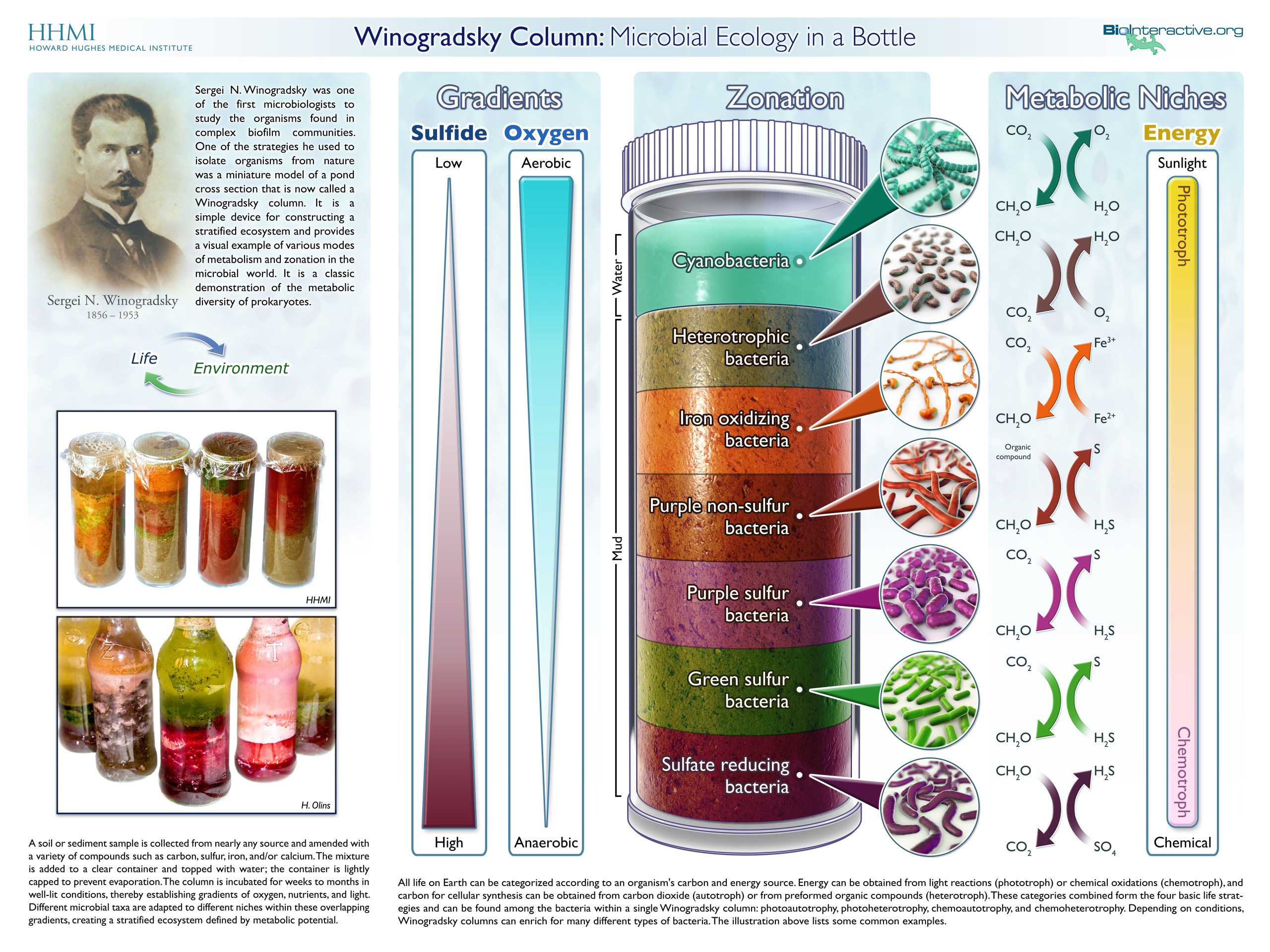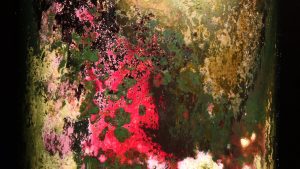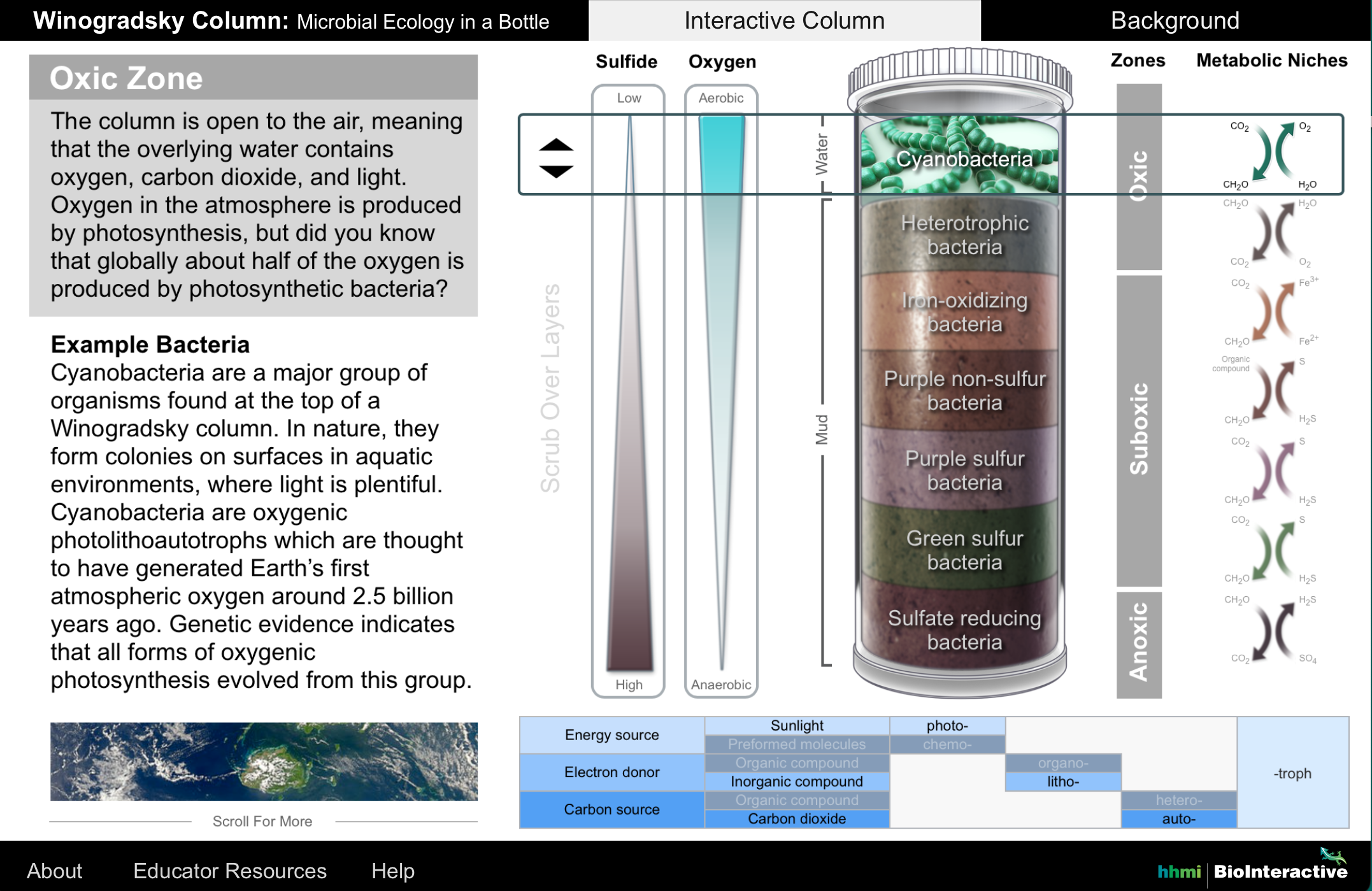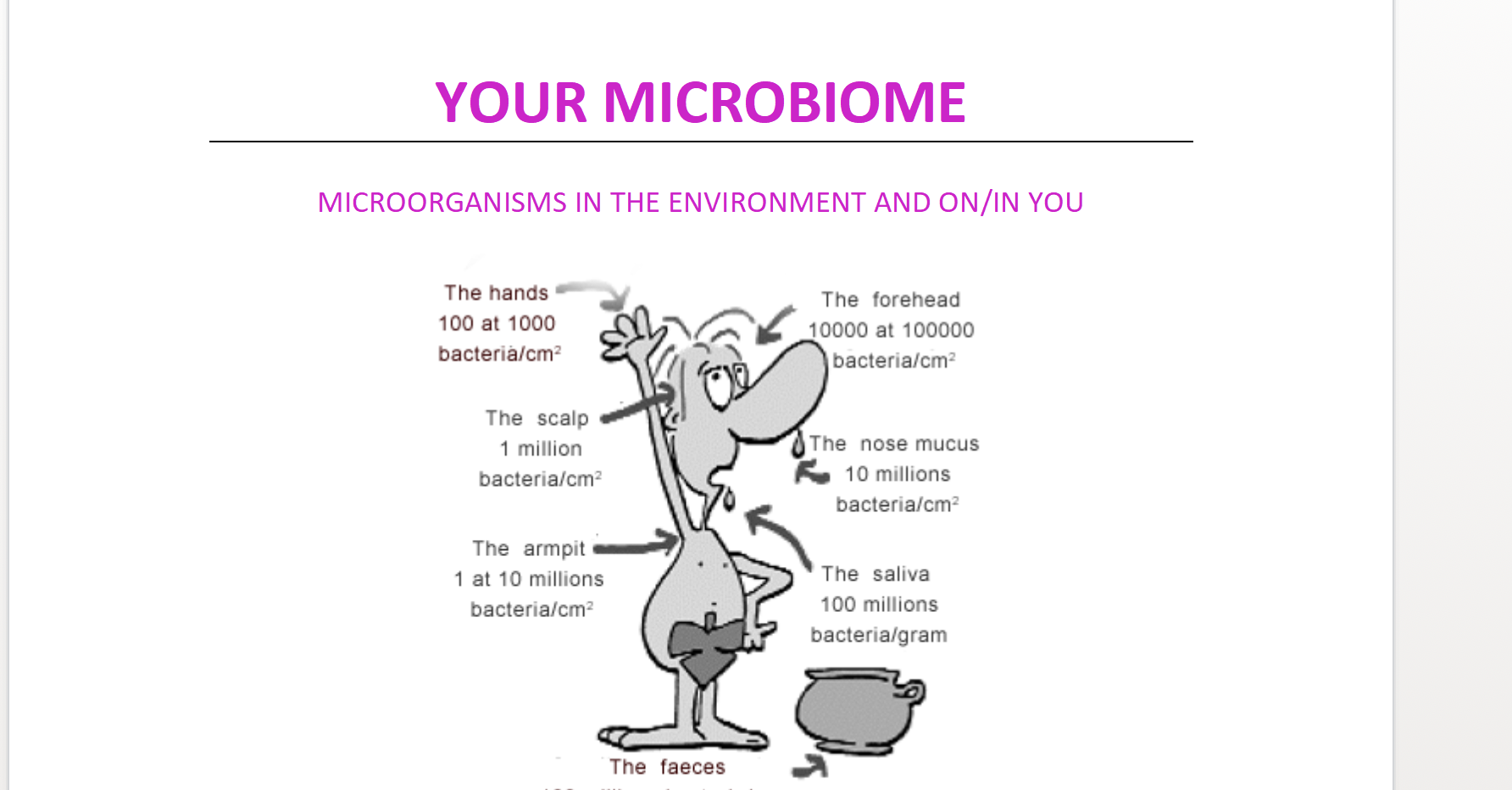Modules – Skills & Tools
Microbial Ecology & Microbiome
Background Information
WHY YOU SHOULD CARE ABOUT…
Gut-Brain Axis & Your Microbiome
You will gain awareness of the omnipresence and magnitude of your microbiome. We will discuss the importance of the microbiome in health and disease and will learn about the gut-brain axis.
The real worlds applications of the effect of our own various microbiomes (gut, oral, skin, vaginal, etc) are vast. Our microbiomes are affected by everything we do and eat, including diet, food additives, environmental pollutants from water, the soap we use, how much exercise we do and so on. We are not yet sure how all these changes actually manifest themselves in diseases later on, but the connections are becoming clearer. One trend is becoming clear is that the larger the diversity of any microbiome, the better and healthier the community.
The other connection of interest is the gut brain axis and the fact that microbes produce neurotransmitters or stimulate the intestine to produce neurotransmitters. The direct communication between the gut and the brain lead to findings that certain antidepressant medication can relief GI symptoms. Also the other way round, usually the better your gut health, the better your mental health. So take care of your diet and gut microbiome and there will be a win win situation, short and long-term.
Access OpenStax:
4.1 Prokaryote Habitats, Relationships, and Microbiomes
The microbial ecology activities will be used for observation and also for microscopy.
A Winogradsky Column
Microbial ecology is an important field of microbiology that explores how microbes affect the health and functioning of natural and human-made systems. By making and observing a Winogradsky column, you can gain a deeper appreciation of the complexity and beauty of microbial life.
A Winogradsky column is a simple device that can be used to study the microbial ecology of soil and water. By adding pond sediment, water, and some supplements to a clear cylinder and exposing it to light, you can create a model ecosystem where different microbes grow in different layers according to their metabolic needs and preferences. A Winogradsky column can help you learn about the diversity of microbes, their interactions with each other and the environment, and their roles in biogeochemical cycles1.
In this activity you will culture a diverse number of colored bacteria, separated into gradients based on sulfide and oxygen levels. Organisms can be distinguished by color formation. This is a microbial ecology experiment which visualizes the diversity of microbes and mutual synergies that exist in an ecosystem. Please make sure to keep your column either outside or close to a window. Without sunlight your ecosystem can turn into a maggot farm or a stink bomb 🙂

A Hay Infusion
A hay infusion is a simple and fascinating ecological experiment that involves placing hay or other organic matter in water and allowing it to decompose over time. This creates a nutrient-rich environment that can be observed for various microbial, protist, and invertebrate life. Hay infusions are not only educational but also a hands-on way to explore ecology and microbiology. They offer a window into the complexity of life in a small ecosystem, making them a valuable tool for students and researchers interested in the natural world. Here are some amazing observations you can make with a hay infusion:
- Microbial Diversity: You can observe a wide variety of microorganisms, including bacteria, algae, fungi, and protozoa, under a microscope. Their shapes, sizes, and behaviors can be intriguing to study.
- Microbial Succession: Over time, you can observe changes in the microbial community as different species of microorganisms thrive, compete, and decline. This can provide insights into ecological succession.
- Protozoa and Paramecia: Protozoa like Paramecium are often present in hay infusions. You can observe their movement, feeding behaviors, and reproduction under a microscope.
- Ciliates and Flagellates: Ciliates, which move using tiny hair-like structures called cilia, and flagellates, which have whip-like flagella, can also be found in hay infusions. Their behaviors are captivating to watch.
- Algal Blooms: As nutrients from the decomposing hay are released into the water, you may observe algal blooms. These can be diverse in color and may change the water’s appearance.
- Bacterial Growth: Bacteria are prolific in hay infusions. You can study their growth patterns, colony formation, and how they interact with other microorganisms.
- Invertebrates: Over time, you may observe various tiny invertebrates such as rotifers, nematodes, and water fleas. These creatures are part of the decomposer community.
- Food Chains: You can observe predation and interactions within the microbial and invertebrate communities, forming simple food chains or webs.
- Decomposition: You can witness the decomposition process as microorganisms break down the organic matter in the infusion, turning the hay into detritus and releasing nutrients into the water.
- Ongoing Change: Hay infusions are dynamic systems. The composition of the community can change from day to day, allowing you to witness ecological dynamics in a small, controlled environment.
- Experimentation: You can manipulate the conditions of the hay infusion to see how factors like temperature, light, or nutrient levels affect the microbial community’s composition and growth.
- Biological Sampling: Use various sampling techniques to collect and identify different microorganisms and invertebrates. Document their presence and abundance over time.
Learning Objectives
After completing this module, students will be able to:
- Recall new vocabulary and definitions that pertain to this module.
- Describe the normal microbiota and the purposes it serves in the environment and human populations.
- Describe normal and transient flora and explain proper hand-washing techniques.
- Explore literature pertaining to the importance of the gut microbiome in health and disease.
- Learn more about the interactions between microorganisms within microbial ecological systems.
- Build a deeper understanding and respect for microbial life and ecology through the exploration of water samples.
- Describe how microbial processes impact microorganism distribution throughout a Winogradsky column.
- Understand the complexity of microbial life within a hay infusion by discussing processes such as decomposition and growth.
History Connections
Winogradsky was a Russian microbiologist who pioneered the study of microbial ecology and the physiology of soil bacteria. He discovered the processes of nitrification and nitrogen fixation by soil bacteria, and he invented the Winogradsky column, a device for cultivating microbes from different layers of soil and water. He also discovered the first known form of chemoautotrophy, the ability of some bacteria to use inorganic compounds as energy sources and carbon dioxide as a carbon source.
Virtual Lab Simulations
Online Lab
Activity: Exploring your Microbiome and Microbial Ecology
-
Make your own Winogradsky Column
-
Make a Hay Infusion
-
Gut Health Assessment
Lab Kit Materials for this Activity:
*Lab Kits will not be shipped out until after Drop/Add, so all the following materials will be self-provided by the student
Winogradsky Column
- One plastic bottle, empty jam or pickle jar or open glass cylindrical container
- Container (bowl, mopping pail, closed trash can)
- Dirt, soil, pond mud or similar (make sure it’s not too sandy to ensure a good mixture of bacteria in your sample)
- One raw or boiled egg or other S source
- Water
- Paper or other Carbon source
- Optional: Vitamins, probiotics, prebiotics, nail (Fe), salt
Hay Infusion
- Small cup or jar
- Water
- Hay, moss, or herbs (you can try different options)
Video Tutorials
The Importance of Our Microbiome
How to Make a Winogradsky Column
How to Make a Hay Infusion
Procedure
Making a Winogradsky Column

- Cut the top of the plastic bottle if applicable
- Put the dirt into the container.
- Shred paper or other C source and put it in the container.
- Break the egg or other S source and put in the container.
- Add other ingredients if you want to (Vitamins, probiotics, prebiotics, nail (Fe), salt ….)) – it would be good to have one regular one and one with other treatment for comparison
- Add a little bit of water to the container and mix thoroughly.
- Place the dirt mixture into the plastic bottle or glass container, make sure it’s 3/4 full with dirt.
- Pour a bit more water into the cylindrical container at the top of the dirt is covered and it will not dry out.
- Close the plastic bottle with saran wrap or aluminum foil and tape it closed. Do NOT cap the bottle/glass jar tight as gas will develop that can explode a closed container.
- Make sure you keep the column outside in the sun or on a window sill, turn it occasionally so it gets light from all sides
Making a Hay Infusion
- Get a small jar or cup
- Put water into the container.
- Put the hay or other dried plant material into the water.
- Cover the container.
- We recommend placing this in the sunlight. Some of the organisms need sunlight to grow.
- Observe for changes and examine a wet mount under the microscope once a week for 4 weeks (Continue on to the Art of Microscopy & Life in a Drop of Water module to learn how to make and examine a wet mount.)
Taking Gut Health Assessments
- Take one of the following gut and health assessments to learn more about your gut-health:
- You do not have to report your test results, but make sure to take notes on your results in your ELN.
Results
Track the following for your ELN:
Winogradsky Column:
- Date created.
- Mud source (pond, creek, soil?)
- Water source (tap, filtered, bottle, pond, creek?)
- Carbon source (type of paper, newspaper, cardboard, tissues, flower?)
- Sulfur source (cooked or uncooked egg, with or without shell, other protein source?)
- Light source (outside, window, did you rotate the column?)
- Other ingredients added to the experiment? (Vitamins, probiotics, prebiotics, nail (Fe), salt ….)
- Observe changes over time, red, white or green colors should develop after several weeks as the ecosystem changes and specific microbes are enriched.
- Take pictures and make observations weekly.
- Explain the changes that happen as it pertains to oxygen, sulfur and enrichment of different microbial species.
*Note of caution: if your column starts to smell really bad or if you find maggots, it’s time to get rid of it. This does not happen very often if you follow the instructions.
Hay Infusion:
- Continue on to the Art of the Microscope & Life in a Drop of Water module to create wet mounts and track microorganisms found in your hay infusion throughout the rest of this course.
Gut Health & Microbiome:
- Include information about your results from the gut health quizzes and discuss the importance of maintaining a health microbiome and gut-brain axis.
Real-World Application
The real worlds applications of the effect of our own various microbiomes (gut, oral, skin, vaginal, etc) are vast. Our microbiomes are affected by everything we do and eat, including diet, food additives, environmental pollutants from water, the soap we use, how much exercise we do and so on. We are not yet sure how all these changes actually manifest themselves in diseases later on, but the connections are becoming clearer. One trend is becoming clear is that the larger the diversity of any microbiome, the better and healthier the community.
The other connection of interest is the gut brain axis and the fact that microbes produce neurotransmitters or stimulate the intestine to produce neurotransmitters. The direct communication between the gut and the brain lead to findings that certain antidepressant medication can relief GI symptoms. Also the other way round, usually the better your gut health, the better your mental health. So take care of your diet and gut microbiome and there will be a win win situation, short and long-term.
In-Person Lab
Activity: Exploring Your Microbiome
Video Tutorials
The Importance of Our Microbiome
Results
Submit your ELN according to your GTA’s instructions.
Be sure to include the following information:
- ELN connection: examine, describe and explain your results. Pay attention to colony morphology, pigmentation and size of growth on your plates. distinguish between bacterial and yeast colonies.
- Do you expect to find and be able to culture microbes, bacteria and fungi, from the air, in the environment and on and in your body? Why or why not. Explain your answer.
- Are there more cells in your body or do you have more microbes in/on you?
- Specimen Collection: which body sites should always be sterile?
How you can find out what kind of organisms grew on your plate?
How do you distinguish bacteria from yeast and fungi? What is the difference between bacteria and fungi?If there are so many organisms in the air and environment why don’t we get sick all the time? - You roommate leaves leftovers in an open pan overnight, insisting that once food is cooked it is safe. How could you provide evidence to disprove this?
- Why is it important to keep Petri plates covered as much as possible when working in the lab?
Resources
- Take a look at the appropriate module for the vocabulary that is being tested: Microbiology @ UF Lab Terminology Quizlet.
- Why Science Says Listen to your Gut (TED MEd)
- NPR special series: The Human Microbiome – Guts and Glory
- UTAH LEARN GENETICS THE HUMAN MICROBIOME
- How Bacteria Rule Over Your Body – The Microbiome (In a nutshell) video
- This is a great article about microbiome research and research methods. Although much progress is being made in microbiome research, there are many potential pitfalls that can lead to wrong results. (Kim, D., Hofstaedter, C.E., Zhao, C. et al. Optimizing methods and dodging pitfalls in microbiome research. Microbiome5, 52 (2017). https://doi.org/10.1186/s40168-017-0267-5)
- Next Generation Sequencing overview Nanopore introduction and overview by Dr.Luiz Roesch



